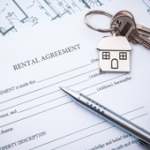 Formed in 2001, the tribunal is comprised of five members (including a chair and vice chairperson) appointed by the Provincial Minister of Human Settlements, who each have expertise in property management, housing development and consumer matters pertaining to rental housing.
Formed in 2001, the tribunal is comprised of five members (including a chair and vice chairperson) appointed by the Provincial Minister of Human Settlements, who each have expertise in property management, housing development and consumer matters pertaining to rental housing.
The tribunal seeks to:
- Harmonise relationships between landlords and tenants in the rental housing sector.
- Resolve disputes that arise due to unfair practices.
- Inform landlords and tenants about their rights and obligations in terms of the Rental Housing Act.
- Make recommendations to relevant stakeholders.
How do I lodge a complaint?
- First complete the relevant forms available from the Rental Housing Tribunal.
- The Rental Housing Tribunal will investigate the matter and find out what the problem is and try to resolve it amicably and as soon as possible.
What will the Rental Housing Tribunal do?
- They will establish whether there is any dispute between the landlord and tenant.
- They will try to resolve the matter through mediation – if the dispute cannot be resolved it should be referred to a hearing.
- They will conduct a hearing, where the landlord and tenant will be summoned for hearing by the Tribunal.
- A just and fair ruling will be made.
- Where a mediation agreement has been concluded, make such an agreement a ruling of the Tribunal. This ruling is binding on both parties.
- The Tribunal may make a ruling as to who pays whose costs.
What happens after I have lodged a complaint?
- After a complaint has been lodged with the Tribunal until the date of the ruling on the matter, the:
- landlord may not evict the tenant;
- tenant must continue to pay the rent; and
- landlord must maintain the property.
This article is a general information sheet and should not be used or relied on as legal or other professional advice. No liability can be accepted for any errors or omissions nor for any loss or damage arising from reliance upon any information herein. Always contact your legal adviser for specific and detailed advice. Errors and omissions excepted (E&OE)

